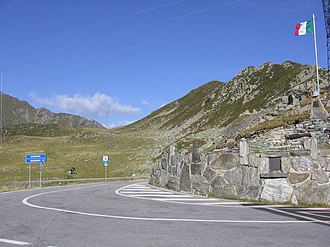| San Marco Pass | |
|---|---|
 | |
| Elevation | 1,992 m (6,535 ft) |
| Location | Italy |
| Range | Alps |
| Coordinates | 46°02′50″N09°37′22″E / 46.04722°N 9.62278°E |
The San Marco Pass (Italian : Passo San Marco) is a mountain pass that links Val Brembana with Valtellina in the Bergamo Alps.
